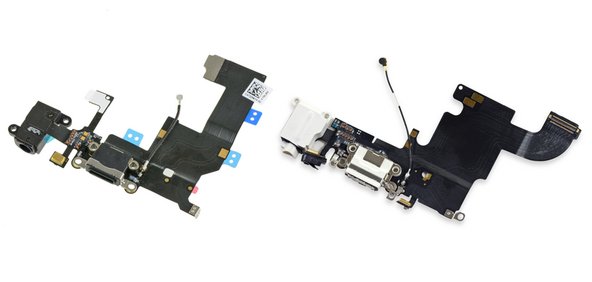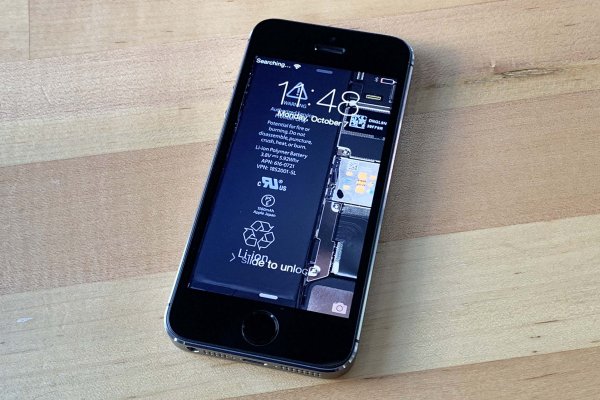As a teardown engineer at iFixit, it’s my job to be prepared for whatever Apple’s cooking up in Cupertino. So I’ve kept an eye on all those headphone jack rumors. Of course, we’ll know for sure if the headphone jack is gone when we get our hands on the iPhone 7 this fall. But for right now, everybody has an opinion.
So here’s mine: Removing the headphone jack and consolidating its function into the Lightning port will lead to more broken Lightning ports.
And here’s why I think so …
Lightning port failure is the iPhone equivalent of cancer—any phone that lives long enough gets it eventually. Which makes sense: You can shamble along on a battery that only lasts 30 minutes, but shove a tiny cable in a tiny port at least once a day for two years and that port is going to wear out. Bad port = no charging = you’re gonna have a bad time.
In the iPhone 5 series (5, 5c, and 5s), Lightning port replacement is the third most common DIY fix—right after screen and battery replacements. For newer models, like the iPhone 6, replacing a broken port is low on the list of common fixes (these are still young phones after all). But our view count on these iPhone 6 guides increases every month, as more phones age and Lightning ports fail.

Interestingly, the Lightning port and headphone jack already live on the same internal cable—in fact, we call it a Lightning connector and headphone jack. So if your jack fails, you wind up replacing the charging port (and a microphone!), too. Because of this, guide views don’t tell me which subcomponent actually fails the most. But Google does: For the iPhone 5-series and the iPhone 6, between 75-87% of people landing on our Lightning connector and headphone jack assembly replacement guides were searching for a fix related to their Lightning ports.
If the rumor holds true and the 3.5 mm headphone jack goes away in favor of a Lightning/audio connector, then consolidating two ports into one could make the repair process a bit easier. But I strongly suspect that it will also increase failure rates of the Lightning-port-audio. Because you’re essentially doubling the use of a port that’s proven delicate in phones-past. Imagine this situation: Part A and Part B both fail, but at different rates. A is a catastrophic failure (device stops functioning entirely), B is a feature failure (can’t use headphones). Combine them into Part A, and you’re going to have a higher failure rate than before. And that increased failure rate takes out the whole device.
Using Lightning headphones would put additional stress on your charging port. In my experience (I recently replaced the charging port on my own iPhone 5s), a lot of damage to the Lightning port happens when you wiggle the cable while it’s plugged in. It acts like a lever, widening and wearing the inside of the port. And what better way to wiggle an inserted Lightning cable than to shove the plugged-in phone in your pocket and go for a saunter? Or a run. Or a hike. Or rock out to Taylor Swift at the gym. (Or be Taylor Swift at the gym).
Sure, you could switch to wireless headphones! But Bluetooth still sucks (both in function and battery impact), and adding more non-replaceable batteries to a product sucks even more. Also, even if Apple includes wireless headphones of some sort, there already are Lightning headphones (available from Apple, no less), so the threat of headphone-induced Lightning port destruction is already very real.
If the iPhone 7 is indeed sans-headphone jack, I would hope that Apple incorporates a stronger port into the device. But I’m not holding my breath. A stronger port might mean a thicker port, which means a thicker phone—and Apple defaults to thin where possible. Plus, in the four year history of Lightning-equipped iPhones, we haven’t seen much development on that front—even with a history of port failures.

If the port isn’t strengthened and we see the rise in failure I’m expecting, a couple of things could happen: Some people will opt to replace the port themselves, or they’ll pay a technician to do the repair. Others will decide it was time to get a new phone anyways. Thanks to the iPhone trade-in program, Apple gets to resell your “old” phone after a quick Lightning port swap, and also gets to sell you a brand new phone.
And that’s my two cents.




2 Comments
I've had mine off for a year now cuz the port whent out and that's the only problem. I can't pay for the fix or the part to get if fixed. I'm at a loss with all my info I need still on there and the only pics of my one cat I keep it in hope that one day I will fix it and turn it back on
Beachhippy 24 - Reply
I've had mine off for a year now cuz of a power surge at Starbucks the port went out and that's the only problem. I can't pay for the fix or the part to fix it myself. I'm at a loss with all my info I need still on there and the only pics of my one cat I keep it in hope that one day I will fix it and turn it back on. till then it's Obama phones and slowly earning every penny towerd my iPhone 7.
Beachhippy 24 - Reply